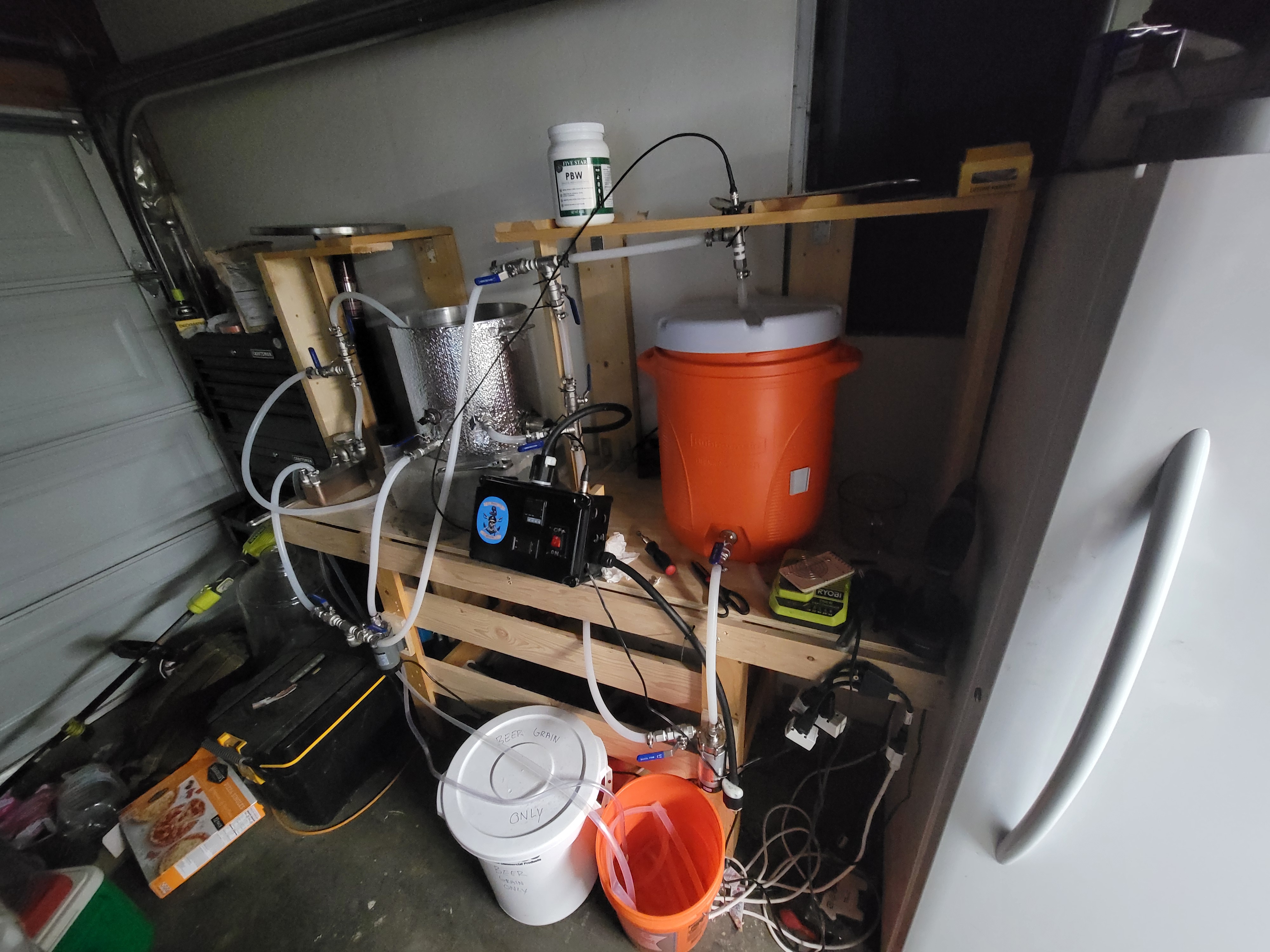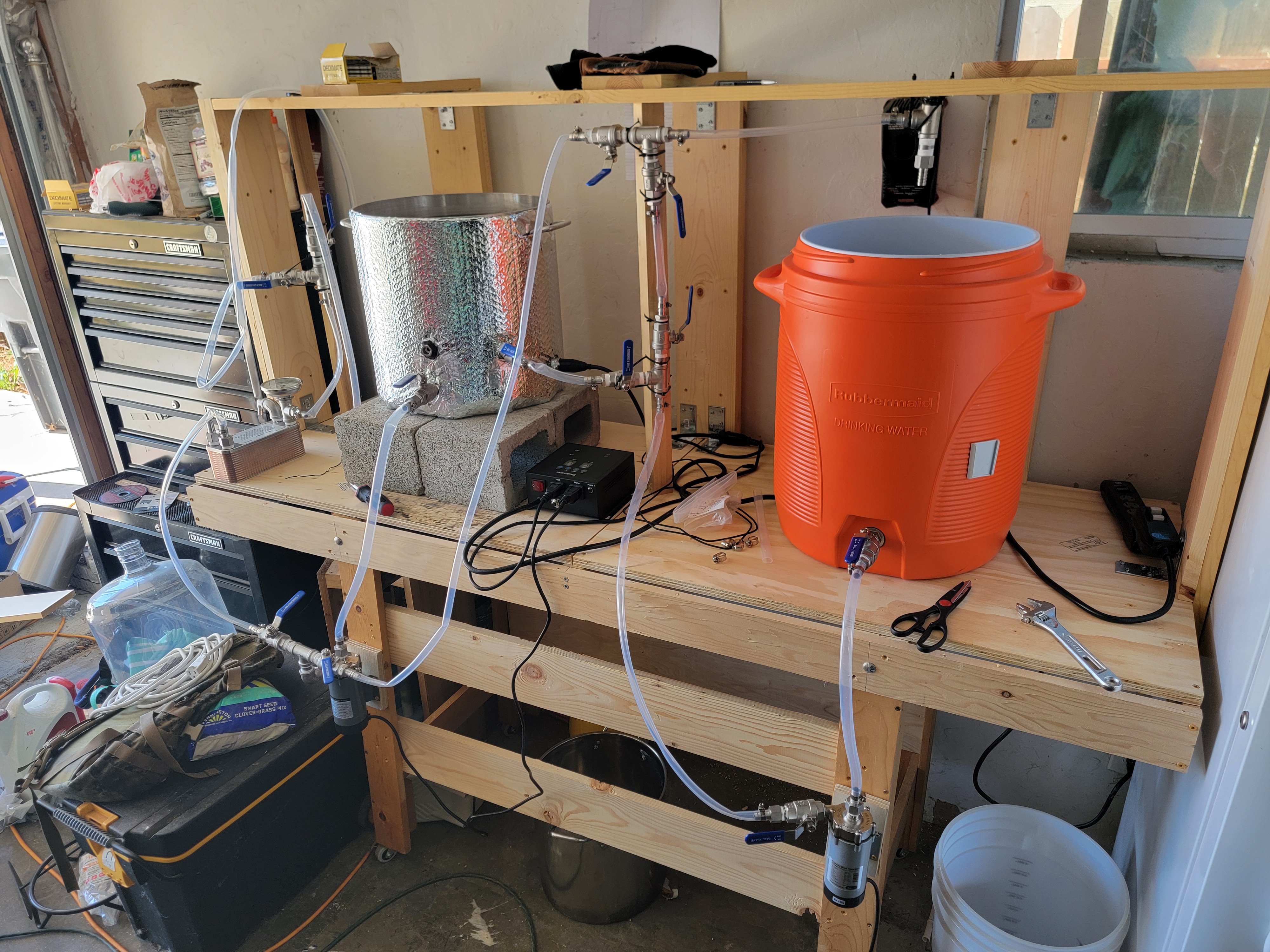Jaeger
Bridge four
- Joined
- Jan 12, 2017
- Messages
- 49
- Reaction score
- 16
my efficiency has gone south and I'm hoping that some of you can help me figure out what I can do to fix it.
Background info:
I decided to upgrade from propane to electric 2 vessel rims system. I've found that the recirculation flows better when I have a bag in the mash tun, along with the false bottom. During the first few brews my efficiency was somewhere around 70%, with some being a touch higher and some a bit lower. The first problem I had was poor readings between preboil gravity and OG, with them being nearly the same. When I got some extra cash, I bought the Smartref from Anton Paar, which is much more accurate than my $20 refractometer. since then, my efficiency had dropped a bit, but nothing too concerning. I am, after all, brewing for me and not commercially. What's a few tenths of an ABV difference?
Well, last night I brewed up an Irish Red and boy was it not what I had expected. 52% efficiency. So, I'm trying to figure out where I can improve things.
Grain bill:
8 lbs Ashburn Mild malt
1 lb flaked corn
1 lb English medium crystal
2.2 oz roasted barley at the last 10 minutes of the mash for color only
all grain came from Northern Brewer, pre-milled as I don't have one yet.
expected Preboil Gravity was 1.040
expected OG was 1.048
My preboil gravity was 1.030
My OG was 1.039
Mashed for 10 minutes at 130, followed by 1 hour at 150, stirring the mash about every 15 minutes to prevent channeling
Mash PH was 5.35
-----
I know one of the big things I can do to help myself would be to buy a mill and mill my own grain. it's on my list and is the next brewery purchase.
could it be that having both a false bottom, which I think lets too much of the grain bits thru, and using a mesh bag be hurting more than helping? I think this could be something I might just have to get over and either deal with or get a new false bottom or upgrade the mash tun to something a bit better. it is just a standard morebeer 10 gallon cooler mash tun that wasn't necessarily designed for this.
Maybe I just need to mash for a longer period of time?
Any suggestions would be greatly appreciated.
Background info:
I decided to upgrade from propane to electric 2 vessel rims system. I've found that the recirculation flows better when I have a bag in the mash tun, along with the false bottom. During the first few brews my efficiency was somewhere around 70%, with some being a touch higher and some a bit lower. The first problem I had was poor readings between preboil gravity and OG, with them being nearly the same. When I got some extra cash, I bought the Smartref from Anton Paar, which is much more accurate than my $20 refractometer. since then, my efficiency had dropped a bit, but nothing too concerning. I am, after all, brewing for me and not commercially. What's a few tenths of an ABV difference?
Well, last night I brewed up an Irish Red and boy was it not what I had expected. 52% efficiency. So, I'm trying to figure out where I can improve things.
Grain bill:
8 lbs Ashburn Mild malt
1 lb flaked corn
1 lb English medium crystal
2.2 oz roasted barley at the last 10 minutes of the mash for color only
all grain came from Northern Brewer, pre-milled as I don't have one yet.
expected Preboil Gravity was 1.040
expected OG was 1.048
My preboil gravity was 1.030
My OG was 1.039
Mashed for 10 minutes at 130, followed by 1 hour at 150, stirring the mash about every 15 minutes to prevent channeling
Mash PH was 5.35
-----
I know one of the big things I can do to help myself would be to buy a mill and mill my own grain. it's on my list and is the next brewery purchase.
could it be that having both a false bottom, which I think lets too much of the grain bits thru, and using a mesh bag be hurting more than helping? I think this could be something I might just have to get over and either deal with or get a new false bottom or upgrade the mash tun to something a bit better. it is just a standard morebeer 10 gallon cooler mash tun that wasn't necessarily designed for this.
Maybe I just need to mash for a longer period of time?
Any suggestions would be greatly appreciated.












































![Craft A Brew - Safale S-04 Dry Yeast - Fermentis - English Ale Dry Yeast - For English and American Ales and Hard Apple Ciders - Ingredients for Home Brewing - Beer Making Supplies - [1 Pack]](https://m.media-amazon.com/images/I/41fVGNh6JfL._SL500_.jpg)















